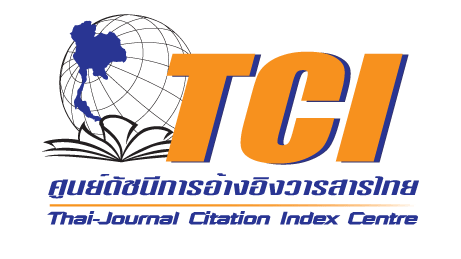กรณีศึกษาโรคคีนบอคหรือกระดูกลูเนตขาดเลือดในผู้ป่วยเด็ก อัมพาตสมองใหญ่
Keywords:
โรคคีนบอค, ภาวะกระดูกขาด, อัมพาตสมอง, กล้ามเนื้อหดกร็ง, Kienböck’ s disease, avascular necrosis, cerebral palsy, spasticityAbstract
Kienböck’s Disease in an Adolescent Patient with Cerebral Palsy: A Case Report
Buntragulpoontawee M
Department of Rehabilitation Medicine, Faculty of Medicine, Chiang Mai University
Objectives: To increase physiatrists’ awareness of Kienböck’ s disease among cerebral palsy patients.
Study design: Case report
Setting: Department of Rehabilitation Medicine, Maharaj Nakorn Chiang Mai Hospital
Subject: A 16-year-old female patient with spastic dyskinetic cerebral palsy
Method: Report a case
Result: This patient came for chemoneurolysis to reduce lower extremity spasticity. She also complained of pain and swelling at the dorsal aspect of the right wrist which occurred for a few months prior to the appointment. Radiography was done for diagnosis before prescribing proper treatment. Her upper extremities also exhibited dyskinetic pattern with severe wrist flexion on the right side. A plain radiograph show avascular necrosis of lunate (Kienböck’ s disease). Oral analgesics and resting wrist splint were prescribed. At six weeks, she reported significant decrease in pain and swelling and improved ability to grasp her walker. Later on, Botulinum toxin was injected to reduce wrist flexor spasticity. At one year, she still remained symptom-free even though a radiograph showed increased lunate collapse.
Conclusion: Kienböck’ s disease is rather uncommon. Physiatrists should be aware of this condition in cerebral palsy patients with prolonged wrist flexion due to spasticity and provide timely diagnosis and treatment.
บทคัดย่อ
วัตถุประสงค์: เพื่อแพทย์เวชศาสตร์ฟื้นฟูเกิดความตระหนักถึง โรคคีนบอคหรือภาวะกระดูกลูเนตขาดเลือดที่สามารถพบได้ใน ผู้ป่วยเด็กอัมพาตสมองใหญ่
รูปแบบงานวิจัย: รายงานผู้ป่วย
สถานที่ทำงานวิจัย: ภาควิชาเวชศาสตร์ฟื้นฟู รพ.มหาราช นครเชียงใหม่
กลุ่มประชากร: ผู้ป่วยเด็กหญิงวัยรุ่น อายุ 16 ปี เป็นเด็กสมอง พิการชนิดกล้ามเนื้อหดเกร็งร่วมกับการเคลื่อนไหวผิดปกติของ ขาและแขนทั้งสองข้าง
วิธีการศึกษา: รายงานผู้ป่วย
ผลการศึกษา: ผู้ป่วยมาพบแพทย์ตามนัดเพื่อฉีดยาลดเกร็ง เฉพาะที่บริเวณน่องทั้งสองข้าง ผู้ป่วยสังเกตพบว่าด้านหลัง ของข้อมือขวาบวมและกดเจ็บเล็กน้อยสองสามเดือนก่อนมา พบแพทย์ แพทย์จึงส่งถ่ายภาพรังสี ให้การวินิจฉัยและการบำบัด รักษาตรวจพบข้อมือขวามักอยู่ในท่างอตลอดเวลาเพราะกล้าม เนื้อเกร็ง ภาพถ่ายรังสีข้อมือพบกระดูกลูเนตขาดเลือด รังสี แพทย์วินิจฉัยโรคคีนบอค จึงให้ยาแก้ปวดและอุปกรณ์ประคอง ข้อมือเป็นเวลาหกสัปดาห์ อาการปวดและบวมลดลงมาก และ สามารถจับเครื่องช่วยพยุงเดินสี่ขาได้ดีขึ้น แพทย์ฉีดโบทูลินัม ทอกซินเพิ่มเติมที่กล้ามเนื้อแขนเพื่อลดเกร็งของกล้ามเนื้อ งอข้อมือ ติดตามผลเป็นเวลาหนึ่งปีผู้ป่วยไม่มีอาการใด ๆ อีก แม้ภาพถ่ายรังสีแสดงให้เห็นว่ากระดูกลูเนตยุบลงกว่าเดิม
สรุป: แพทย์เวชศาสตร์ฟื้นฟูซึ่งเด็กอัมพาตสมองใหญ่เป็น ประจำควรตระหนักถึงโรคคีนบอคหรือภาวะกระดูกลูเนตขาด เลือดไม่ใช่ภาวะที่พบได้บ่อย การวินิจฉัยและรักษาภายในเวลา ที่เหมาะสมช่วยบรรเทาอาการปวดได้




